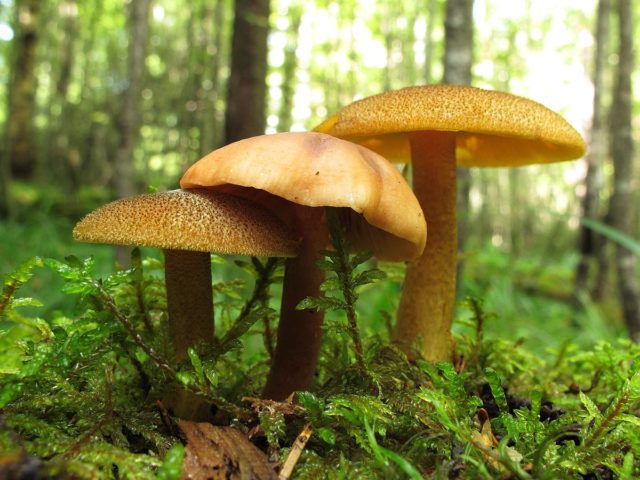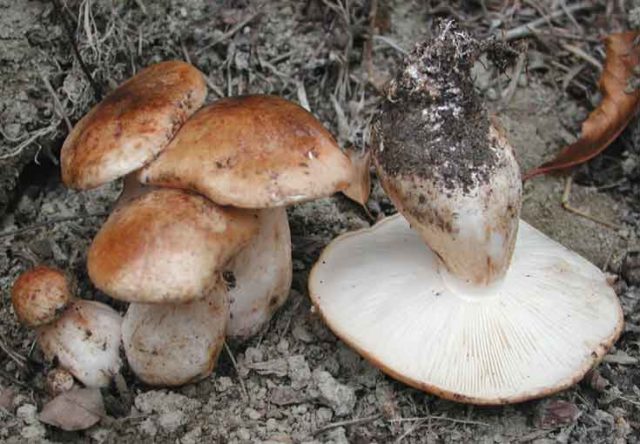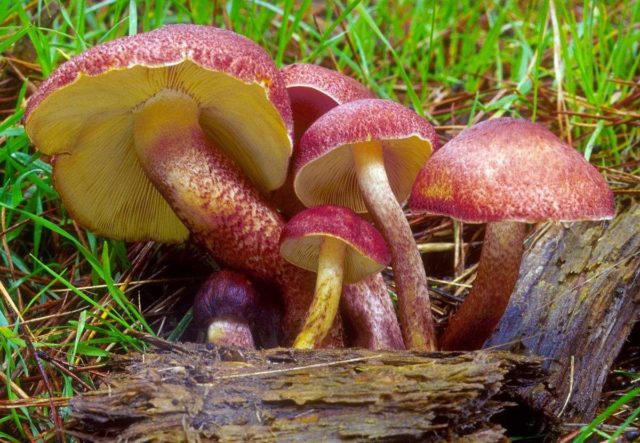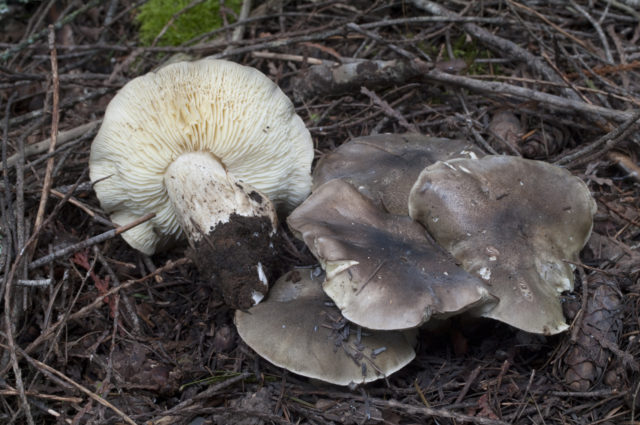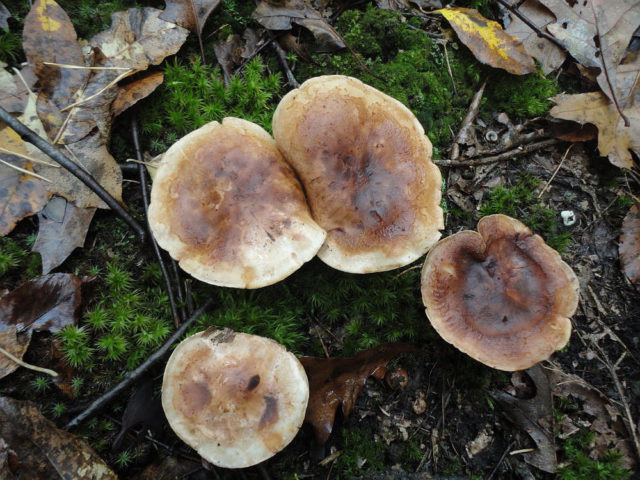Content
The row is decorated, the row is beautiful, the row is olive-yellow - one of the representatives of the large Tricholomovy or Ryadovkovy family. This species got its name due to the unusual color of the fruit body. The fungus is rare and prefers to grow in small groups. The official name is Tricholomopsis decora.
Where decorated rows grow
Growing places - coniferous and mixed forest. This species prefers to grow on rotting pine or spruce wood. Also found on tree stumps and decaying mossy trunks.
The decorated row is common in Europe and North America. On the territory of Russia, it can be found in the European part, Western Siberia and the Komi Republic.
How do the decorated rows look like?
The decorated row has a classic-shaped fruit body, so the cap and leg are clearly pronounced. Moreover, the overall size of the fungus is small compared to other representatives of this family.
The hat has a convex shape with characteristic irregularities along the edge. Its shade is yellow ocher, but in the central part it is more saturated. On the entire surface, brown-brown scales are noticeable, the shade of which is much darker than the main tone. The diameter of the upper part reaches 6-8 cm. In young specimens, the edges of the cap are slightly tucked, but as they mature, the shape becomes rounded-bell-shaped with a flattened or slightly depressed apex. The spore powder is white.
The pulp is fibrous, creamy. It does not have a pronounced mushroom smell. Its scent is more woody.
On the back of the cap there are frequent narrow plates. They show characteristic grooves at the points of fusion with the surface of the leg. They have a sinuous shape, and the shade is yellow-ocher. Spores are colorless, elliptical, smooth. Their size is 6-7.5 x 4-5.5 microns.
The stem is small: 4-5 cm high and 0.5-1 cm wide. Its shade can vary from purple to gray-yellow, depending on the age of the mushroom.
Characteristic differences:
- thickening at the base;
- cavity inside;
- curved shape;
- small scales on the surface.
Knowing the main features of a decorated row, it will not be difficult to distinguish it from other varieties of the family.
Is it possible to eat decorated rows
This species is conditionally edible. When consumed in moderation, it is not capable of causing poisoning, but due to its low quality, it is not of interest to mushroom pickers.
Taste qualities of mushroom decorated ryadovka
The pulp of the mushroom has a characteristic bitterness, which negatively affects the taste.Therefore, many mycologists, due to rancidity, attribute the decorated ryadovka to inedible representatives.
Benefits and harm to the body
The decorated row has medicinal properties, therefore it is used in pharmacology. Scientific studies have shown that this species has antibacterial and antiviral effects.
The main contraindications for use:
- an increased level of acidity in the stomach;
- chronic diseases of the digestive system;
- cholecystitis;
- pancreatitis.
With excessive and incorrect use, characteristic signs of intoxication can be felt:
- nausea;
- vomiting;
- cramps in the stomach;
- increased flatulence.
In this case, you should rinse the stomach and drink a tablet of activated charcoal for every 10 kg of body weight. And you should also call a doctor.
False doubles
The decorated row is similar to many members of the row family. Therefore, it is important to know the characteristic differences between twins in order to exclude the possibility of error.
Poplar row (Tricholoma populinum). Belongs to the category of conditionally edible. The characteristic difference is the pinkish-brown color of the cap, as well as the mealy smell of the pulp. It prefers to grow under aspen and poplar trees.
Row yellow-red (Tricholomopsis rutilans). A distinctive feature is a velvety dry cap with small red-brown or burgundy-purple scales on the surface. The pulp is thick, yellow, with a sour smell. This species is considered conditionally edible.
Soap row (Tricholoma saponaceum). A characteristic feature of this twin is the persistent smell of laundry soap, for which the mushroom got its name. The color of the cap varies from gray-olive to blackish-brown with a blue tint. When broken, the pulp acquires a red tint. Belongs to the category of conditionally edible mushrooms.
The row is sulfur-yellow (Tricholoma sulphureum). Weakly poisonous mushroom with an unpleasant smell of hydrogen sulfide and tar. Young specimens have a yellow-gray cap, but as they mature, the shade changes to gray-yellow. Refers to inedible.
The row is white-brown (Tricholoma albobrunneum). The characteristic difference is the brown cap with dark veins. The flesh is white without any signs of yellowness. Belongs to the category of conditionally edible mushrooms.
Collection rules
The ripening period begins at the end of August and lasts all September. Due to the small number, it is not necessary to collect and prepare a decorated row. Experts recommend giving preference to other edible species of this family.
Use
You can eat forest fruits fresh, but after preliminary soaking in cold water for 15-20 minutes. It is recommended to drain the mushroom broth.
Despite its bitter taste, the decorated ryadovka has a pleasant woody aroma, so it can be combined with other edible species.
Conclusion
The decorated row stands out noticeably against the background of other species with its bright color. But due to its low taste, it is not particularly valuable. Therefore, experts recommend not to collect or harvest this species, but rather to give preference to more valuable varieties of mushrooms.
